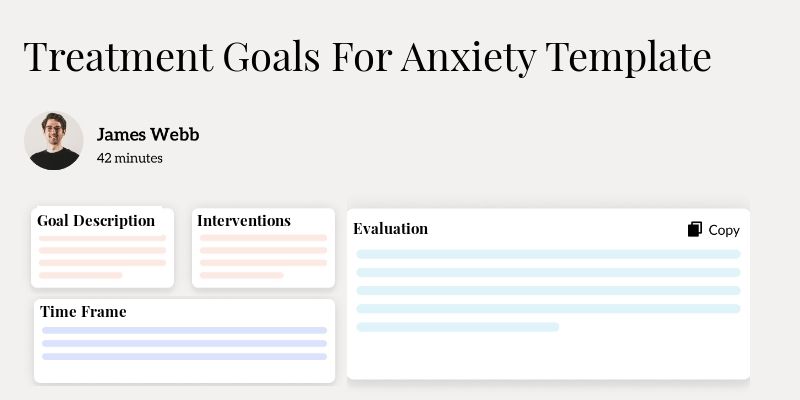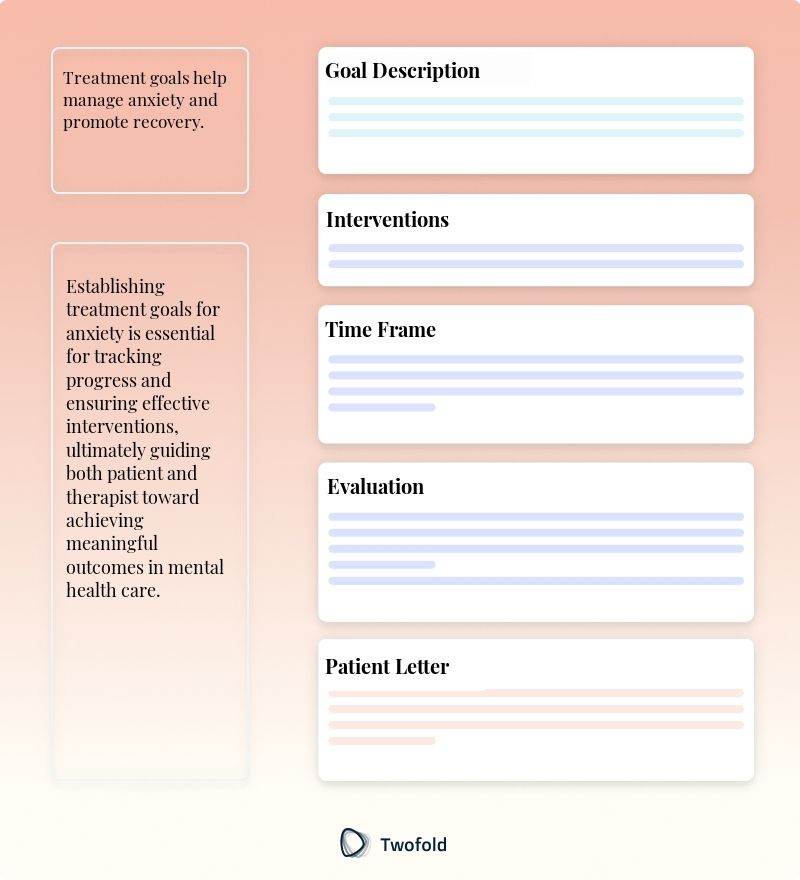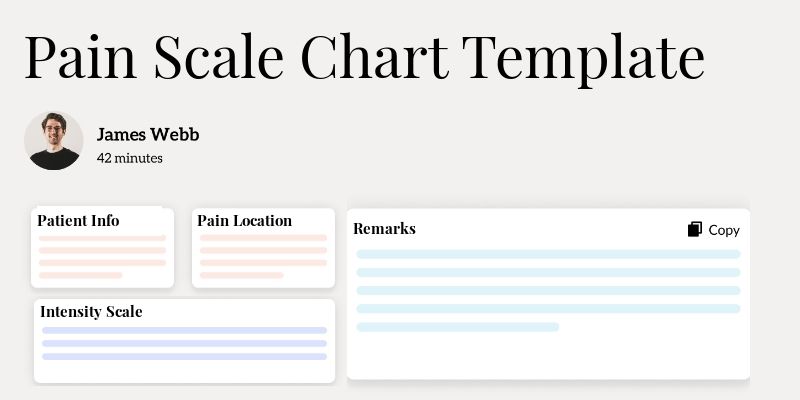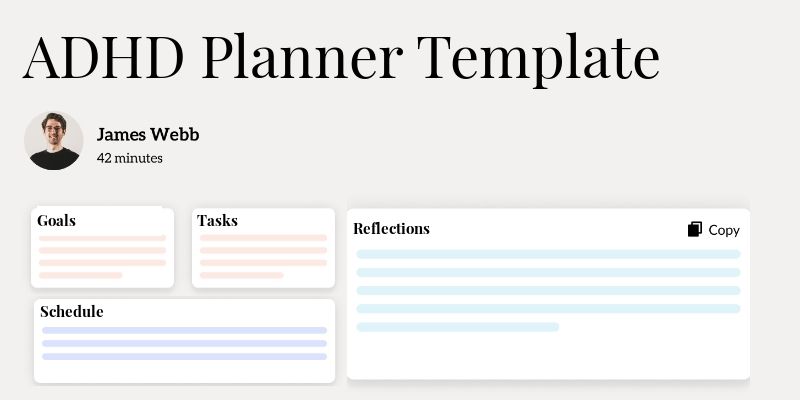
Treatment Goals For Anxiety Template
Have you ever found yourself overwhelmed when trying to set clear treatment goals for patients suffering from anxiety? Whether you're a seasoned mental health professional or just starting your journey, creating effective and concise treatment goals can seem daunting. The Treatment Goals for Anxiety Template might just be the essential tool you've been searching for to streamline and enhance your documentation process.
What Is a Treatment Goals for Anxiety Template?
A Treatment Goals for Anxiety Template is a structured framework designed to assist healthcare providers in formulating clear, actionable objectives for patients dealing with anxiety. It serves as a guide to improve treatment efficacy and enhance communication among care team members.
These templates streamline the documentation process by providing a consistent format that aligns with best practices. This ensures that all critical aspects of the treatment plan are covered and easily reviewed by the care team.
Key Components of a Treatment Goals for Anxiety Template
Anxiety treatment templates are designed for clarity and comprehensiveness, often including the following:
- Patient Identification: Name, age, and relevant medical history.
- Diagnosis Summary: Overview of the anxiety disorder, including severity.
- Treatment Goals: Clear, specific, and measurable objectives tailored to the patient.
- Intervention Strategies: Detailed approach to achieve each goal.
- Progress Indicators: Metrics to evaluate patient improvement.
- Review Dates: Scheduled assessments to track and adjust the plan if needed.

How to Use a Treatment Goals for Anxiety Template: Step-by-Step Process
Step 1: Patient Assessment
Begin with a comprehensive evaluation of the patient's anxiety symptoms and their impact on daily functioning.
Step 2: Goal Setting
Identify specific, achievable goals for the patient, focusing on areas such as reducing panic attacks or improving social interactions.
Step 3: Develop Intervention Strategies
Outline the therapeutic methods or interventions that will help the patient reach each goal.
Step 4: Document Progress
Include measurable indicators to regularly assess the patient's advancement towards set goals.
Step 5: Schedule Follow-Ups
Arrange regular reviews to discuss progress and make necessary adjustments to the treatment plan.
Benefits of a Treatment Goals for Anxiety Template
Benefit | Description |
|---|---|
Efficiency | Reduces time spent on documentation by providing a predefined structure. |
Consistency | Ensures uniformity in documenting goals and treatment strategies across the practice. |
Clarity | Enhances understanding and tracking of patient progress. |
Communication | Facilitates effective information exchange among healthcare providers. |
Stakeholders in Treatment Goals for Anxiety
Numerous stakeholders engage with the Treatment Goals for Anxiety Template to ensure comprehensive care:
- Mental Health Professionals: Use the template to set and track treatment goals. For instance, a therapist may collaborate with a psychiatrist to adjust medication and therapy duration.
- Patients: Engaged in setting goals that resonate with personal values and aspirations, a young adult might express a desire to build confidence in social settings.
- Family Members: Often support the patient in achieving their goals. Parents of a teenager with anxiety may participate in family therapy sessions to bolster the treatment process.
- Insurance Providers: Require clear documentation to assess the necessity of treatment plans, ensuring coverage continuity for interventions.
Example of a Treatment Goals for Anxiety PDF
Here is a sample PDF displaying a filled‑in Treatment Goals for Anxiety Template, illustrating how to document specific patient goals and progress.
Real-World Use Cases: Practical Impact of the Treatment Goals for Anxiety Template
The Treatment Goals for Anxiety Template offers real‑world advantages by enhancing patient care and facilitating smoother workflows.
- A therapist at a busy urban clinic efficiently manages a large caseload by using the template template for rapid updates and reducing documentation time.
- An outpatient clinic integrates patient self-assessment scores into the template to personalize treatment plans and visibly track improvements.
- A school counselor collaborates with teachers to adapt the template into an educational setting, helping students manage anxiety in academic environments.
Conclusion
The Treatment Goals for Anxiety Template offers an invaluable resource for healthcare providers by streamlining documentation and promoting effective goal setting. By providing clear, concise, and personalized treatment objectives, it enhances patient outcomes and improves interdisciplinary communication. This tool ultimately supports comprehensive patient care while facilitating ease of documentation and review.
Disclaimer: This article is for informational purposes only and does not constitute legal or medical advice. Always consult professional guidelines and regulatory bodies for specific compliance requirements.

Dr. Danni Steimberg
Dr. Danni Steimberg is a pediatrician at Schneider Children’s Medical Center with extensive experience in patient care, medical education, and healthcare innovation. He earned his MD from Semmelweis University and has worked at Kaplan Medical Center and Sheba Medical Center.
Anxiety goals work best when they’re laser‑focused and track real‑life change. The CALM-4 framework—Clearly define baseline, Add triggers & context, Level milestones at 4‑week marks, Measure with validated scales—turns a generic plan into an insurer‑ready roadmap.
- Clearly Define the Baseline: Start each goal with the client’s current rating (e.g., GAD-7 = 15) so progress is unmistakable.
- Add Triggers & Context: Tie the goal to a specific anxiety trigger (“social gatherings”)—this link guides targeted interventions like exposure hierarchies.
- Level Milestones at 4 Weeks: Break the big objective into 4-week checkpoints (GAD-7 drops to 10 by Week 4, 7 by Week 8) to prove steady clinical improvement.
- Measure with Validated Scales: Re-score GAD-7 or BAI at each milestone; objective data both motivates clients and satisfies payers’ medical-necessity criteria.
Ask ChatGPT
You said:
Frequently Asked Questions
Reduce burnout,
improve patient care.
Join thousands of clinicians already using AI to become more efficient.

Medical Chart Template
Discover practical Medical Chart templates to enhance your documentation efficiency.

Pain Scale Chart Template
Discover practical Pain Scale Chart templates to enhance your documentation efficiency.

ADHD Planner Template
Discover practical ADHD Planner Template templates to enhance your documentation efficiency.

